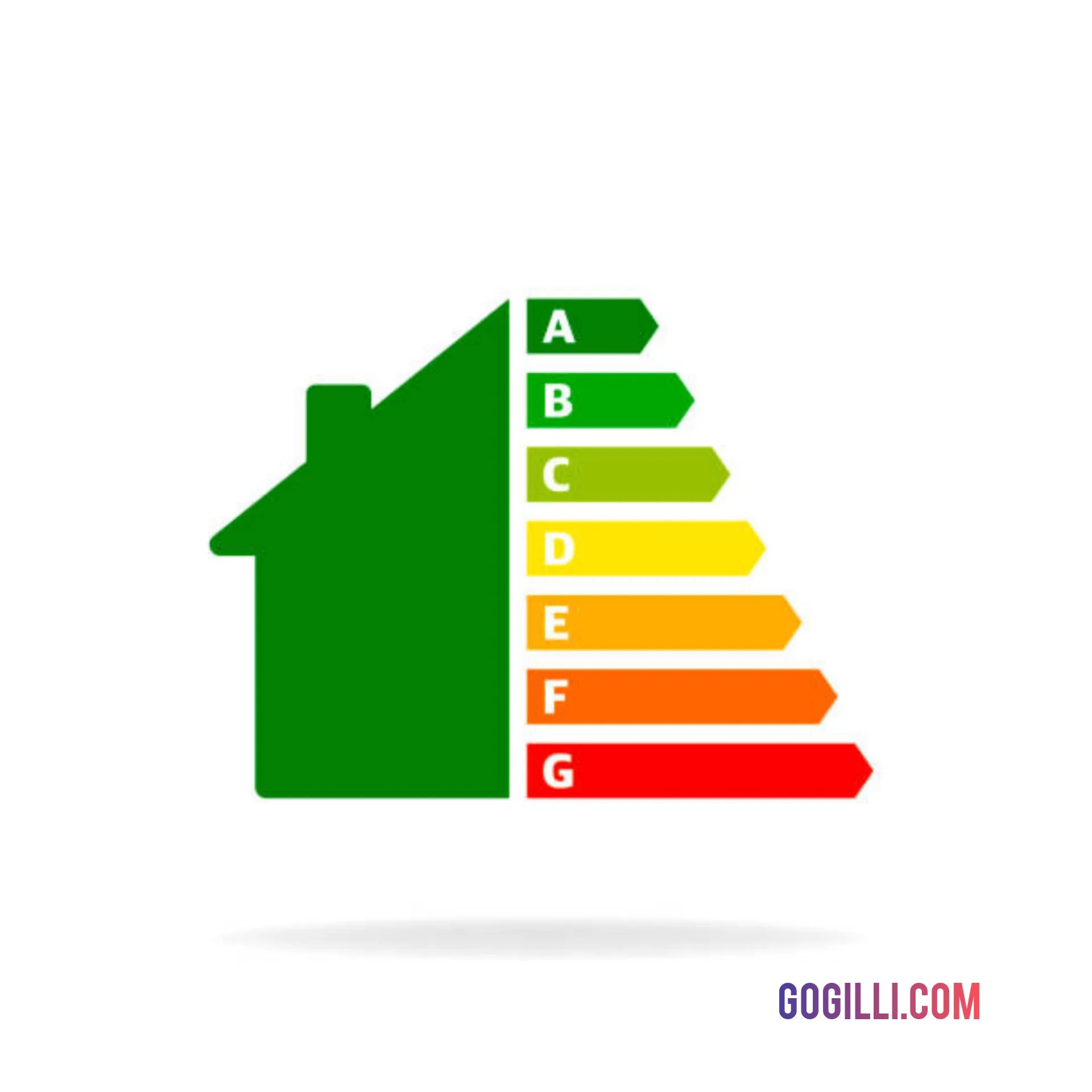Take a revolutionary trip and discover the limitless potential of multi-site utility use. Acquire insightful knowledge, investigate novel approaches, and optimize utility efficiency throughout your enterprise. Begin writing your success story now!
Prepare yourself for an exciting voyage through the multi-site utility usage globe. As we show how to take advantage of the incredible cost-saving potential, excitement is in store. Seize this wonderful chance to change the way you use energy right now.
Take advantage of our in-depth information on multi-site utility use to gain a competitive edge. Learn the insider tips, tested tactics, and methods for reducing utility expenses in several locations. Don’t pass up this fantastic chance to save money!

What is multi-site utility consumption?
Using resources from many sites is known as multi-location or multi-site consumption. Numerous methods, including virtual machines, containers, and shared services, can be used to accomplish this.
For corporations, controlling utility consumption across several locations can be a difficult task. Nonetheless, considerable cost savings and increased productivity are achievable with the appropriate plans and resources. Here are a few practical ways to reduce power use across many sites:
Put in place a thorough energy management system (EMS):
With the use of an EMS, you can monitor and evaluate data on energy usage across all of your locations, giving you important insights into usage trends and possible areas for development. Energy-saving options including replacing outdated equipment with more energy-efficient models, installing lighting controls, and improving HVAC systems can all be found with the help of this data.
Clearly define your energy-saving policies and practices. Clearly state the expectations and goals for energy conservation for each employee. Encourage staff members to take part in energy-saving projects and instruct them on how to do the same at work.
Implement Utility Management Software
Software known as utility management software (UMS) assists companies in controlling their utility expenses and usage. It can be used to monitor usage, spot areas for cost reductions, and set up automatic payments and invoices. Water and sewer systems, transformers, generators, and other utility assets can all be maintained and monitored with UMS.

There are numerous varieties of UMS available, including on-premises software and cloud-based options. The particular features of a UMS will change based on what the business requires. But certain traits that are shared are as follows:
Data reporting and collection:
UMS can gather data from a range of sources, including sensors, meters, and invoices. Thereafter, reports on consumption, expenses, and potential for savings can be produced using this data.
Automation of billing and payments: UMS can automate utility billing and payment procedures. In addition to saving money and time, this can also help organizations make fewer mistakes.
Asset management: Utility asset maintenance can be monitored and controlled with UMS. By doing this, you may prolong the life of your assets and help prevent outages.
Energy efficiency analysis: Businesses can find opportunities to save energy by using UMS. This can be achieved through the identification of energy-efficient technologies and the analysis of data on consumption trends.
The following are some advantages of employing UMS:
Lower utility costs: By assisting companies in identifying and putting into practice energy-efficient procedures, UMS may help them save a lot of money on utilities.
Enhanced operational effectiveness: UMS can assist companies in streamlining their processes and enhancing effectiveness. For instance, UMS can be used to automate payments and invoices, freeing up employees’ time to concentrate on other duties.
Improved decision-making: UMS can give companies useful information and insights to help them decide how best to use their utility resources. UMS, for instance, can be used to pinpoint locations where companies can spend money on energy-saving equipment.
Here are some considerations for anyone thinking about using UMS:
The magnitude and intricacy of your enterprise: The kind of UMS you require depends on the scale and complexity of your company. A small corporation, for instance, might only require a rudimentary UMS with reporting and consumption tracking capabilities. A larger company, however, could require a more advanced UMS that offers energy efficiency insights along with the ability to automate invoicing and payments.
Your budget: UMS can cost several thousand dollars or a few hundred dollars. The features you require and the size of your company will determine how much UMS costs.
Your personnel: Your employees must receive UMS usage training. They will be able to maximize the benefits of the software as a result.
All things considered, UMS can be a useful tool for companies of all sizes. Businesses may increase productivity, cut costs, and make wiser utility usage decisions by putting UMS into place.
Conduct Regular Energy Audits
The methodical process of finding and assessing chances to lower energy expenses and consumption is called an energy audit. It entails gathering and evaluating energy usage data, spotting chances for energy conservation, and formulating suggestions for advancement.

Energy audits can be carried out in commercial and industrial settings as well as in homes.
Regular energy audits have several advantages, such as:
- Lower energy expenses
- Enhanced energy economy
- prolonged life of equipment
- enhanced quality of air inside
- less of an impact on the environment
- A higher building’s worth
- How to Carry Out an Energy Assessment
Energy audits come in three primary varieties:
A walkthrough audit is a rapid and low-cost method of locating fundamental energy-saving possibilities.
Level 1 audit: This is a more thorough audit that entails gathering energy consumption data and pinpointing certain areas for energy savings.
Level 2 audits: are the most complete kind; they entail a careful examination of energy consumption and the creation of a comprehensive strategy for energy conservation.
An energy audit should be conducted by who?
Either professional energy auditors or do-it-yourselfers with energy audit kits or software can carry out energy audits.

When to Perform an Audit of Energy
An energy audit should be carried out at least once every three to five years, or more frequently if a building or facility has undergone major modifications that may have an impact on energy use.
- Ideas to Conserve Energy
- Here are some energy-saving suggestions:
- As soon as you leave a room, turn out the lights.
- Make use of energy-saving appliances.
- Plug up any leaks around doors and windows.
- Set up a programmable thermostat.
- Get your HVAC system maintained regularly.
You may lower your environmental impact, save money, and increase the energy efficiency of your house or place of business by regularly doing energy audits and implementing energy-saving measures.

Implement Smart Building Technologies
By implementing smart building technologies, buildings can function more efficiently, sustainably, and with greater occupant comfort. This is a how-to manual for putting smart building technology into practice:
- Define Your Objectives and Goals:
Establish your goals and objectives for implementing smart building technologies before you start the process. Are you trying to cut down on energy use, raise security, make occupants more comfortable, or maximize space use? Your strategy for selecting and implementing technology will be guided by your well-defined objectives.
- Evaluate the Building:
Evaluate the infrastructure and systems in your building in detail. Determine which areas can benefit most from smart technology advancements. This could entail assessing HVAC performance, occupancy levels, energy consumption trends, and potential security flaws.
- Create a roadmap for technology:
Make a thorough technology roadmap that details the precise smart building technologies that need to be used, how they should be integrated with current systems, and when they should be implemented in phases. Think about the interoperability of the technologies and whether any upgrades or infrastructure changes are required.

- Choose Your Technology Providers:
Examine carefully potential technology providers and choose those who can best meet your needs and goals by considering factors including experience, knowledge, and ability to offer solutions. Make demonstrations, request quotes, and make sure vendors offer thorough support and training.
- Employ and Consolidate Technology:
As per the established plan, start putting the chosen smart building technology into practice. Make sure there is a smooth integration with current systems, test everything thoroughly, and provide facilities management employees with the training they need.
- Track and Enhance Efficiency:
Maintain a close eye on how well the smart building technologies are working. Examine sensor and device data to find areas that could use more improvement. Make use of analytics and machine learning to anticipate problems and take proactive measures to resolve them.
- Updating and Maintaining Technologies:
To guarantee the best possible performance and lifetime of smart building technology, establish a regular maintenance program. Keep up with technological developments and, where necessary, think about replacing or upgrading out-of-date part
8. Involve Tenants and Encourage Adoption:
Inform building residents of the advantages of smart building technologies and motivate them to get involved. To improve their experience and encourage interaction with the smart building elements, offer user-friendly interfaces and mobile applications.

Recall that putting smart building technologies into practice is a continual process that calls for constant assessment, modification, and creativity. You may make your building a truly intelligent and sustainable space by taking a calculated approach and utilizing the most recent developments.
Monitor and Control Water Consumption
Water consumption needs to be tracked and managed for both financial and environmental reasons. We can cut waste and save money if we are aware of how much water we consume and where it is going. There are several methods for keeping an eye on and managing water usage.

Other things may be done at the community or city level to monitor and limit water consumption in addition to these individual actions. These consist of:
Investing in water infrastructure can help to lower leaks and increase water efficiency. Examples of this infrastructure include pipes and pumps.
Putting in place water conservation initiatives: Raising awareness among the populace about the need to conserve water and providing financial incentives to do so can aid in lowering usage overall.
Keeping an eye on water resources: Monitoring reservoir and aquifer water levels can assist in spotting possible shortages and creating strategies to deal with them. We can contribute to ensuring that this priceless resource is available for future generations by taking action to monitor and regulate water consumption.
Leverage Bulk Purchasing Power
Businesses can utilize bulk purchasing power to bargain with suppliers for lower pricing by making greater purchases of goods or services. Significant cost savings and increased profitability may result from this. The following are some advantages of buying in bulk:
Reduced costs: You can frequently bargain with suppliers to get a lower price per unit when you purchase in quantity. This is as a result of suppliers being ready to give bigger orders discounts.
Lower ordering costs: Buying in bulk can also lower the price of placing and receiving orders for items. For instance, you might be able to work out longer payment terms with suppliers, which would help your cash flow.
Better inventory control: By lowering the frequency of orders, bulk buying can also aid in better inventory control. Time and resources can be spared for other projects as a result.
These are some pointers on making the most of bulk purchasing power:
Determine your needs: It’s critical to ascertain your needs and create a purchase plan before beginning negotiations with suppliers. This will assist you in figuring out how much to order and guarantee that you receive the finest deals.
Develop a relationship with suppliers: Getting the best deals requires developing a relationship with suppliers. Spend some time discussing your needs in a meeting with suppliers. They will better comprehend your company and present you with the ideal offers as a result.
Aggressive bargaining: Don’t be hesitant to haggle with vendors. If the price doesn’t satisfy you, be ready to go.
Use a purchasing consortium, if possible: A purchasing consortium consists of several companies that combine their purchasing power to negotiate lower pricing with suppliers. For companies without the volume to independently negotiate advantageous costs, this can be a useful option.

These pointers can help you use bulk buying power to increase profitability and save costs for your company.
Educate and Engage Employees
Organizations must invest in employee education and engagement if they are to stay competitive, increase productivity, and create a happy workplace. Organizations may empower their workforce, raise employee happiness, and eventually enhance business outcomes by investing in employee development and fostering a culture of learning.
Strategies for Educating and Engaging Employees
- Incorporate Technology into Learning:
- Seek Employee Feedback on Training Programs
- Create a Collaborative Learning Environment
- Identify Employee Needs and Preferences
- Develop a Comprehensive Learning and Development Plan
- Offer Diverse Learning Methods
- Encourage Continuous Learning
- Recognize and Reward Learning Achievements
By putting these tactics into practice, businesses may foster an environment where learning and involvement are valued and individuals are encouraged to realize their full potential, which promotes business expansion and success.
Set Performance Benchmarks for multi-site utility
Multi-site utilities need performance benchmarks to monitor their progress, pinpoint areas for development, and make well-informed decisions. Utilities can guarantee the effectiveness, dependability, and economy of their operations by setting precise and quantifiable benchmarks.
KPIs, or key performance indicators
The following key performance indicators (KPIs) can be applied to multi-site utilities to benchmark them:
Customer satisfaction: The degree of satisfaction with the goods and services provided by the utility is gauged by this KPI. Surveys, focus groups, and consumer complaints can all be used to monitor it.
Reliability: The frequency and length of outages are measured by this KPI. Monitoring both scheduled and unforeseen failures is crucial.
Efficiency: The utility’s capacity to generate and distribute energy with the least amount of waste is gauged by this KPI. Metrics like fuel usage and line losses can be used to monitor it.
Cost-effectiveness: This KPI assesses how well the utility can supply energy at a competitive price. Metrics like cost per customer and cost per kWh can be used to monitor it.
Sustainability: The utility’s environmental impact is measured by this KPI. Metrics like water use and greenhouse gas emissions can be used to monitor it.
How to Benchmark an Idea
The following steps are usually involved in the benchmarking process:
- Determine pertinent benchmarks: Choose benchmarks that are appropriate for the size, kind, and location of the utility.
- Compile information: Compile information from both external and internal sources, including government databases and industry reports as well as operational and historical records.
- Analyze data: Examine the information to find patterns and trends.
- Establish goals: Establish performance goals by the utility’s strategic objectives and benchmarks.
- Track your progress: Keep an eye on how you’re doing about your goals and adapt as necessary.
These are merely illustrations; the precise benchmarks that apply to a given utility will differ based on its unique situation. Nonetheless, multi-site utilities can make sure that their operations are dependable, economical, and efficient by setting precise and quantifiable goals.
